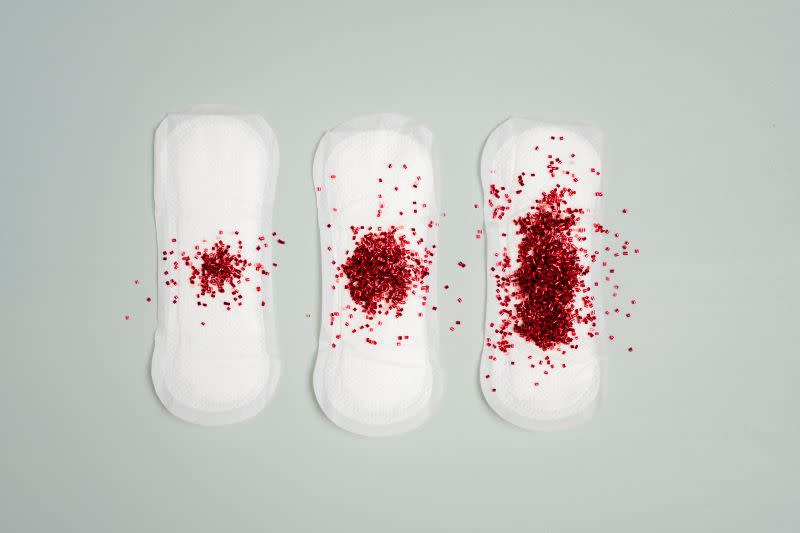Menstrual Hygiene: Know More About the Colour of Your Period Blood
The colour and texture of your period blood can change from month to month, even during a single period, or remain the same for years. Factors like diet, exercise, lifestyle, environment, hormonal changes, health conditions, and age are common influencers. A trip to the doctor is not necessary for every little change you notice, but you mustn't ignore your menstrual health and hygiene.

Here are some of the common colours, and what they mean:
Black
There is no need to worry if you see black blood, it could simply mean that it is old blood that has taken some time to leave the uterus. When blood remains in the body, it has the chance to interact with the oxygen and turn darker. Black blood usually occurs at the beginning or the end of the period. If you have any other symptoms like fever, swelling around the vagina, foul-smelling discharge, and difficulty urinating – along with black blood – do check with your doctor for vaginal blockage.
Brown
Just like black blood, dark brown blood is also blood that has had the time to oxidize in your uterus. It usually occurs in the beginning and end of the period. Brown blood is also associated with lochia, the discharge that occurs after delivering of a baby. Another reason for brown blood could be a missed miscarriage – when a fetus stops developing but doesn’t leave the body for four weeks.
See a doctor if you observe a heavy flow of brown blood through your period and if you have spotting of brown blood during your pregnancy.
Bright red
This usually means that you are experiencing a normal period and blood is flowing quickly from your body. Consider consulting your doctor if you have bright red discharge before you are due, it could be an indicator of infections like chlamydia and gonorrhoea. But if you experience bright red discharge through your period, you have absolutely nothing to be worried about.
Pink
This happens when the blood mixes with cervical fluid and its hue gets diluted. You may also see this colour if you experience mid-cycle spotting during ovulation days. Pink blood can also be an indicator of low oestrogen levels in your body. Oestrogen maintains the uterine lining in your body and when you lack that hormone, you may shed off a part of the lining along with your period blood. You need to see a doctor if you experience long bouts of pink blood during your period, or if it is a frequent occurrence.

Orange
Mixing of blood with cervical fluid can result in orange blood. Orange blood is also associated with implantation spotting – indicating that you are ovulating. This usually happens between the 10th and 14th day of your menstrual cycle. If orange discharge/bleeding persists, you need to consult your doctor for bacterial infections, or sexually transmitted diseases.
Grey
If you are seeing grey discharge, you definitely need to call your doctor. Grey discharge is usually associated with bacterial infections and miscarriages. Other symptoms of a vaginal infection are fever, itching, abdominal pain and foul odour in the discharge/vagina. If you are seeing grey discharge while you are pregnant, it can also indicate a miscarriage.
So while we are all concerned about our menstrual health, having a range of colours and textures of period blood that are completely normal. We still suggest that you consult a doctor whenever you feel discomfort beyond normal.
(Edited by Kanishk and Varnika Gupta)


